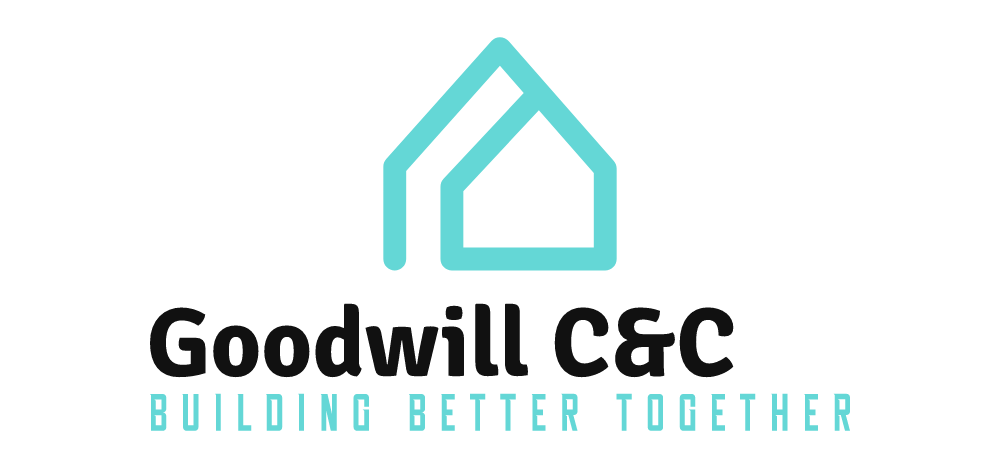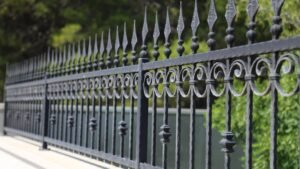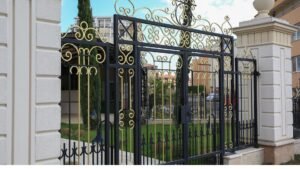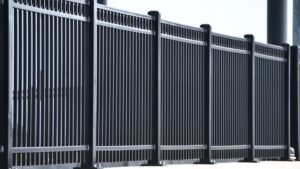Welcome to our comprehensive guide on determining the optimal number of gates for your fence in New Zealand. Whether you’re a homeowner looking to renovate your property or a developer working on a new project, the decision on how many gates your fence should have is crucial for both functionality and compliance with local regulations. In this guide, we’ll explore the various factors that can influence this decision, including the size and layout of your property, the primary purpose of your fence, and any specific legal requirements you need to consider. By the end of this post, you’ll have a clear understanding of how to plan your fence and gate system to meet your needs and those of your property, ensuring safety, convenience, and aesthetic appeal.
When deciding how many gates a fence should have in New Zealand, consider factors like the fence’s purpose (security, privacy, or aesthetics), property size, and local regulations. Typically, residential properties benefit from at least two gates: a main entry and a service gate for practicality and safety. Check with local councils for specific fencing and gate requirements to ensure compliance and optimal functionality.
Table of Contents
Understanding The Purpose Of Your Fence
When planning to install a fence, it’s crucial to consider its primary purposes and how these influence various aspects of its design and functionality. Whether you’re aiming to enhance security, ensure privacy, boost curb appeal, or meet practical needs, every element from gate placement to the number of entry points should align with your specific objectives. Let’s delve into how the primary purposes of a fence can impact its overall design and functionality.
Security: Strategizing Gate Placement and Number
Security is often a top priority for homeowners when installing a fence. A well-designed fence can deter intruders and enhance safety. The placement and number of gates play a critical role in securing your property. Strategically placed gates ensure easy access for occupants without compromising security. For instance, fewer gates might enhance security by limiting potential entry points for unauthorized access. Additionally, consider the type of locks and the height of the gates, as these factors are pivotal in fortifying the security of your home.
Privacy: Balancing Access and Seclusion
Privacy is another significant factor influencing fence design. If creating a private retreat is your goal, the positioning of gates and the overall accessibility of the fence are crucial. Gates should be designed to offer access where needed without overly exposing the property to passersby or neighbors. For instance, placing a gate away from a direct view of the street can significantly increase privacy. Materials play a role here too; opting for solid, taller materials can prevent outsiders from looking in, thereby enhancing your seclusion.
Aesthetics: Harmonizing Functionality with Style
While fences are practical, they also contribute significantly to the aesthetic appeal of your property. The number and design of gates should complement the style of your home and landscape. An aesthetically pleasing gate can serve as a focal point and add charm to your property’s overall appearance. When considering aesthetics, think about materials and designs that blend harmoniously with your home’s architecture. The choice of color, style, and material should enhance, not detract from, the beauty of your property.
Practicality: Considering the Functional Uses of Your Fence
The practical uses of a fence, such as keeping pets in, wildlife out, or dividing different areas of a property, require thoughtful consideration of gate placement and number. For instance, you may need multiple gates for different purposes: a main gate for vehicles, a side gate for foot traffic, and perhaps a back gate for garden access. The functionality of each gate should align with its intended use, ensuring that each entry point facilitates the flow of movement effectively and efficiently.
In conclusion, understanding the purpose of your fence and how it aligns with your needs is essential in the planning process. Whether your priority is security, privacy, aesthetics, or practicality, each aspect of your fence’s design from the number of gates to their placement should be carefully considered to create a functional, attractive, and secure boundary for your property. Tailoring your fence design to meet these considerations ensures that it will serve its intended purpose effectively, enhancing both the usability and enjoyment of your outdoor space.

Legal And Regulatory Considerations
When planning to install a new fence or gate, it’s crucial to navigate the maze of legal and regulatory considerations to ensure your project proceeds smoothly and legally. This guide delves into the essential aspects you must consider, ranging from local regulations to national building codes and neighborhood guidelines. By understanding and adhering to these rules, you can avoid costly mistakes and neighborhood disputes.
Local Regulations
Before you break ground on your new fence or gate, the first step is to check with your local council or municipal authority. Local regulations can significantly influence various aspects of your installation, including the height of the fence, the materials used, and the exact placement relative to property boundaries. For instance, many areas have specific height restrictions to ensure visibility in residential zones or near roads. Boundary rules are equally important as they define how far from the property line your fence should be erected, which can prevent disputes with neighbors.
Building Codes
In addition to local rules, national building codes play a pivotal role in fence and gate installations. These regulations are designed to ensure safety and quality in construction practices. Whether it’s the sturdiness of the materials used or the design and functionality of the gate, compliance with building codes is non-negotiable. For example, if you’re installing a gated entry that is automated, there are specific codes regarding the safety mechanisms to prevent accidents and injuries.
Neighborhood Guidelines
Lastly, if your property is part of a homeowners’ association (HOA) or similar entity, you’ll need to consider any neighborhood-specific rules or aesthetic guidelines. Many neighborhoods enforce rules about the type of fences or gates you can install, aiming to maintain a uniform look and feel throughout the community. These guidelines can dictate everything from the color and height of your fence to the style of your gate, aligning with the overall neighborhood aesthetic for cohesive community planning.
In conclusion, understanding and adhering to these legal and regulatory frameworks is essential for any fence or gate installation project. Not only do they ensure that your installation is safe and secure, but they also help maintain harmonious relations within your community. Always take the time to research thoroughly or consult with a professional to navigate these regulations effectively. Doing so will ensure that your fence and gate enhance both the functionality and appearance of your property without leading to legal complications.
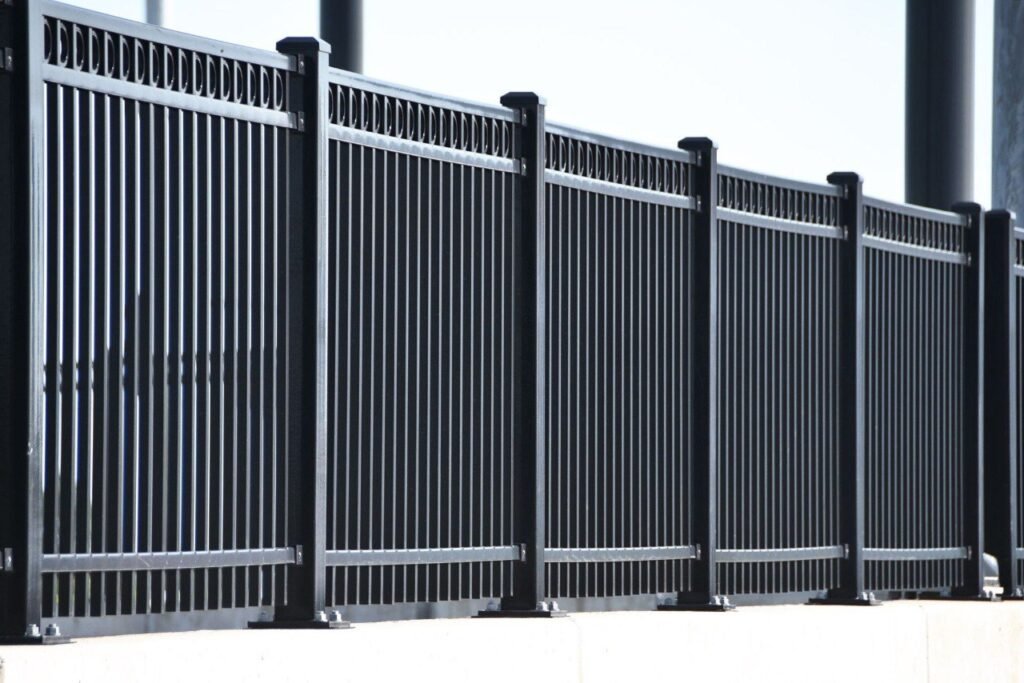
Factors Influencing The Number Of Gates
When planning the installation of gates on your property, several factors come into play that determine not just the type of gates needed, but also the number. This article dives deep into the intricacies of gate planning, focusing on the size and layout of the property, user accessibility, and the types of gates. Here’s a comprehensive breakdown of these critical considerations:
Property Size and Layout
The size and layout of your property are primary determinants of how many gates you’ll require. Larger properties, especially those with multiple access points, may need several gates to ensure ease of access and security. The layout of your land also plays a significant role. Properties with separate sections for different uses, like a residential area and a garden or orchard, might need distinct entrances for each area. Additionally, the design of your landscape can influence gate placement; natural pathways or driveways that lead to different parts of your property could necessitate individual gates to accommodate the flow of traffic and enhance functionality.
User Accessibility
Considering who will use the gates and how frequently they will be accessed is crucial. For instance, if your property is a multifamily dwelling or a commercial establishment, you might need more gates to avoid congestion and enhance ease of access for all users. Accessibility needs for individuals with disabilities may also impact the number and type of gates. For example, wider gates or automated gate systems might be required to ensure that everyone can enter and exit the property without difficulty. Frequent use by service vehicles, deliveries, and emergency services can also influence the number of gates needed, as each might require different specifications for access.
Type of Gates
The functionality and purpose of gates vary, affecting the choice between pedestrian gates, driveway gates, and utility gates. Here’s how each type serves different needs:
Pedestrian Gates: These are typically smaller and may be positioned strategically for foot traffic. They are ideal for entry points that lead directly to a home’s front door or garden. Pedestrian gates ensure security while providing convenient access for walkers or cyclists.
Driveway Gates: These are larger and designed to allow vehicle access. Driveway gates are often automated for convenience and enhanced security. They can be critical in managing access to private properties or commercial facilities and controlling both the entry and exit of vehicles.
Utility Gates: Used for service areas or sections of a property that require functional access for maintenance, deliveries, or emergency services. These gates are often placed away from the main traffic flow and are essential for operational efficiency and security.
Each type of gate fulfills a specific role, and the selection depends on the unique needs of the property and its users.
In conclusion, when deciding on the number and types of gates for a property, it’s essential to consider the size and layout of the land, the needs of the people using the gates, and the specific functions each gate will serve. Thoughtful planning can enhance not only the property’s functionality but also its security and aesthetic appeal. Whether you’re installing gates for a new property or upgrading an existing setup, these factors will guide you to make informed decisions that meet all your requirements.
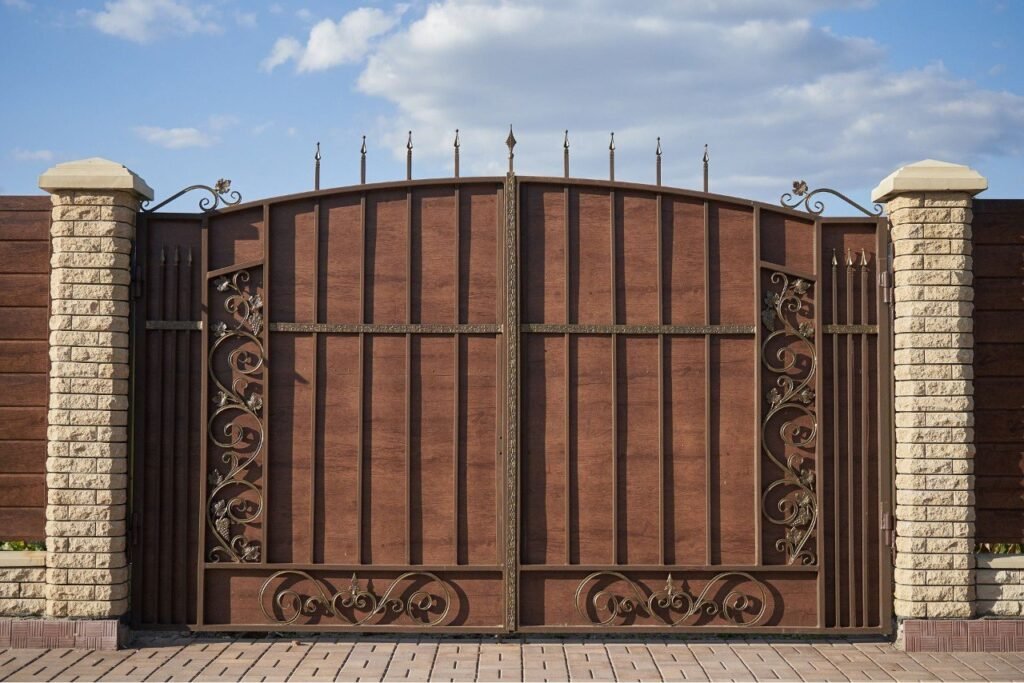
Types Of Gates Available In New Zealand
When considering enhancing your property’s security and aesthetic appeal, choosing the right gate is crucial. In New Zealand, property owners have a variety of gate options that can complement different architectural styles and meet various functional needs. Here, we’ll delve into the types of gates available, focusing on their operation mode (manual vs. automated), material choices, and design options.
Manual vs. Automated Gates: Which Suits Your Property Best?
Manual Gates: Manual gates are often appreciated for their simplicity and lower initial cost. They require physical effort to open and close, which might be a deterrent for some, especially in adverse weather conditions. However, manual gates are less prone to mechanical failures and are easier to maintain and repair, making them a solid choice for those who prefer a straightforward, cost-effective solution.
Automated Gates: Automated gates, on the other hand, offer convenience and enhanced security. These gates are ideal for those who value comfort and are looking for modern security features like remote opening, keypad access, or intercom systems. The primary drawbacks are the higher cost, both in terms of installation and maintenance, and the potential for mechanical or electrical issues. Nevertheless, for busy individuals or larger properties, the benefits of automated gates often outweigh these concerns.
When deciding between manual and automated gates, consider factors like your budget, property size, and personal convenience. Automated gates might be more suitable for commercial properties or homes with long driveways, while manual gates could be perfect for smaller, personal spaces where the cost and complexity of automation aren’t justified.
Material Choices for Gates in New Zealand
The material you choose for your gate not only influences its appearance but also its durability and maintenance needs. Here’s an overview of the most common materials:
Wood: Wooden gates offer a classic and natural look, blending seamlessly with many traditional New Zealand homes. They are versatile but require regular maintenance like painting or sealing to prevent weather damage.
Metal: Metal gates (including iron and aluminum) are known for their durability and strength. They provide excellent security and can be crafted into intricate designs. However, metals like iron may rust over time if not properly treated.
Vinyl: Vinyl gates are becoming increasingly popular due to their minimal maintenance and resistance to weathering. They don’t rust, rot, or need repainting. However, vinyl may not offer the same level of strength as wood or metal and might not fit the aesthetic of more traditional properties.
Choosing the right material for your gate will depend on your aesthetic preferences, the climate in your area, and how much maintenance you’re willing to undertake.
Design Options for Gates in New Zealand
New Zealand’s rich architectural heritage offers a wide range of design options for gates:
Classic Designs: These often feature wood or wrought iron with traditional patterns, suitable for colonial or Victorian-style homes.
Modern Designs: Sleek lines and minimalist styles using metals or vinyl fit contemporary homes. These might include automated sliding or swing gates with clean, uncluttered lines.
Rustic Designs: Ideal for country homes or cottages, rustic designs often use raw wood or aged metal to create a charming, old-world feel.
When selecting a gate design, consider the architectural style of your home and the overall look you want to achieve. Whether you prefer a gate that blends in with your home’s design or one that stands out as a statement piece, there’s a range of options available to suit your needs.
In conclusion, when choosing a gate for your property in New Zealand, it’s important to consider the type of gate that best fits your lifestyle and property type, the materials that will offer the durability and aesthetics you desire, and the design that complements your home’s architecture. By carefully selecting each element, you can enhance not only the security but also the curb appeal of your property.
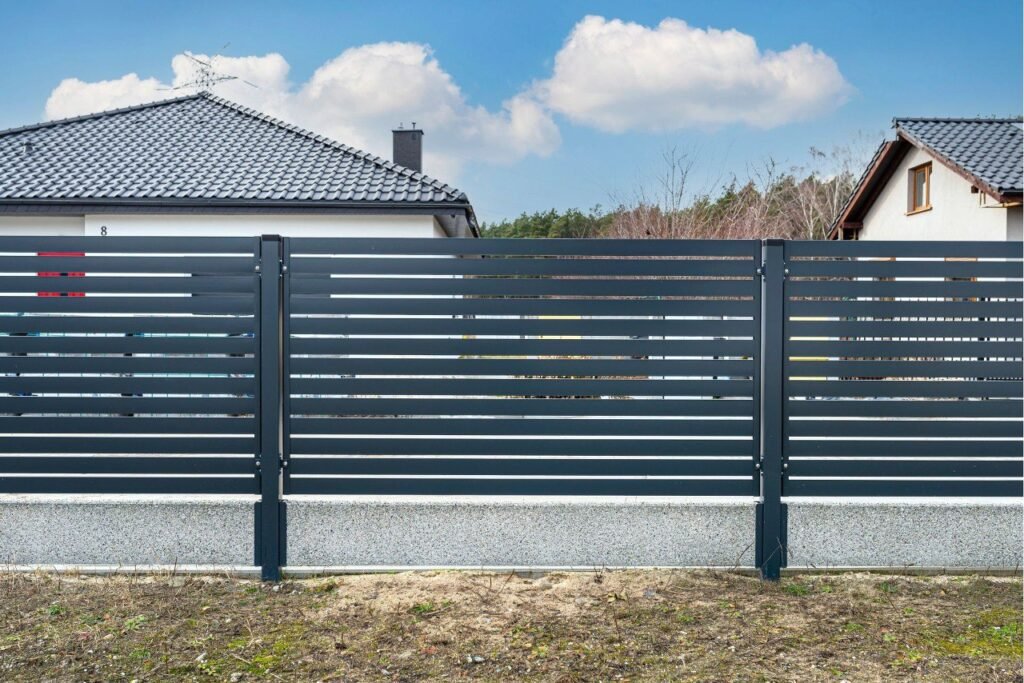
Planning And Installation Tips
When it comes to enhancing the security and aesthetic appeal of your property, installing a fence and gate is a critical decision. This guide provides detailed insights into planning your fence and gate layout, choosing the right contractor, and maintaining your installation to ensure it serves you well for years to come.
Planning Your Fence and Gate Layout
The first step in your fencing project involves careful planning of your fence and gate layout. This process is crucial to ensure that the final installation meets your privacy, security, and aesthetic needs. Here are steps to plan effectively:
1. Assess Your Needs: Determine the primary purpose of your fence and gate. Is it for security, privacy, or aesthetic appeal? Your goals will influence the design, material, and placement.
2. Survey Your Property: Have a professional survey done to understand your property lines clearly. This prevents potential disputes with neighbors and ensures compliance with local zoning laws.
3. Choose the Right Materials: Select materials that fit your climate, budget, and style preferences. Common choices include wood, vinyl, aluminum, and wrought iron.
4. Consider Accessibility and Flow: Plan gate placements thoughtfully to accommodate accessibility to vehicles and pedestrians. Ensure the gates are placed at convenient points to facilitate easy entry and exit.
5. Check Local Regulations: Before finalizing your plan, check with your local planning office to understand any regulations or permits required for fence and gate installations.
Choosing the Right Contractor
Selecting a competent contractor is pivotal in ensuring your fence and gate are installed correctly and last many years. Here are tips to help you choose the right contractor:
Look for Experience: Choose a contractor with extensive experience in installing the type of fence you want. Experienced contractors are more likely to deliver high-quality work.
Check Reviews and References: Read online reviews and ask the contractor for references. Contact these references to inquire about their experience with the contractor and the durability of the installation.
Verify Licenses and Insurance: Ensure the contractor is licensed and insured. This protects you from liability and ensures they meet industry standards.
Get Multiple Quotes: Request detailed quotes from several contractors to compare prices, materials, and timelines. Ensure the quotes include all aspects of the project to avoid unexpected costs later.
Ask the Right Questions: Prepare questions to ask potential contractors. These could include inquiries about their process, timeline, subcontractors used, and after-installation services offered.
Maintenance Tips for Gates
Proper maintenance is essential to extend the life and functionality of your gates, regardless of the type used. Here’s a brief guide on maintaining different types of gates:
Wood Gates: Regularly check for signs of rot or insect damage. Apply a weather-resistant stain or paint every few years to protect the wood from moisture and sun damage.
Metal Gates (Iron, Aluminum): Inspect for rust or corrosion. Treat affected areas and repaint periodically to prevent further damage. Lubricate the hinges and locks to ensure smooth operation.
Vinyl Gates: Vinyl is low maintenance but regular cleaning with soapy water will keep it looking new. Check for cracks or brittleness and address repairs promptly.
Automatic/Electric Gates: Regularly test the mechanism to ensure it’s working correctly. Schedule annual inspections by a professional to maintain its mechanical components.
By following these detailed planning, installation, and maintenance tips, you can ensure that your fence and gate add value and functionality to your property for years to come.

Case Studies And Examples
In the realm of real estate, the adage “first impressions matter” rings especially true, and nothing defines the initial appearance of a property quite like its perimeter solutions notably, its fencing and gates. This section delves into three distinct case studies that showcase a variety of fencing and gate solutions tailored to different types of properties across New Zealand: a small urban home, a large rural estate, and a suburban family residence. Each example provides a practical illustration of how homeowners can enhance both the aesthetics and functionality of their properties.
Case Study 1: The Compact Urban Home in Wellington
In the bustling urban landscape of Wellington, space is a premium commodity. The Smiths’ residence, a charming yet compact urban home, required a fencing solution that maximized space while enhancing security. The solution? A stylish, high-quality aluminum slat fence that offers robust protection without sacrificing aesthetic appeal. This type of fencing is not only durable and low maintenance but also features a sleek design that complements the modern architectural elements of the home. The gate is equipped with an automated system that integrates seamlessly with the home’s smart technology, providing convenience and security with a touch of sophistication.
Case Study 2: The Expansive Rural Property in Waikato
Contrasting sharply with urban confines, the Browns’ sprawling rural property in Waikato presented a different set of challenges and opportunities. Here, the primary concerns were boundary demarcation and livestock security rather than space conservation. The solution implemented was a combination of traditional post-and-rail fencing and modern, electrified barriers. This blend ensures the containment of livestock while defining property boundaries without obstructing scenic views. Additionally, the property features custom-designed, manual wooden gates that reflect the rustic environment, enhancing the natural beauty of the rural landscape.
Case Study 3: The Suburban Family Home in Auckland
The Johnsons’ suburban family home in Auckland needed a fencing solution that provided privacy and safety for children and pets, without creating a fortress-like feel. The answer was a tastefully designed vertical timber fence that offers a high degree of privacy and noise reduction. The warm wood tones of the fence create a welcoming feel, while its height keeps the play areas out of sight from passersby, ensuring a safe, private space for family activities. The gate system, similar to the urban case, is automated, featuring secure entry mechanisms that can be remotely controlled, offering both convenience and security.
These case studies illustrate that whether it’s the tight urban spaces of Wellington, the expansive lands of Waikato, or the family-friendly environments of Auckland, there are fencing and gate solutions available to meet the diverse needs of New Zealand homeowners. Each solution not only addresses the functional requirements of privacy, security, and boundary demarcation but also enhances the property’s overall curb appeal, demonstrating that practicality and aesthetics can go hand-in-hand.
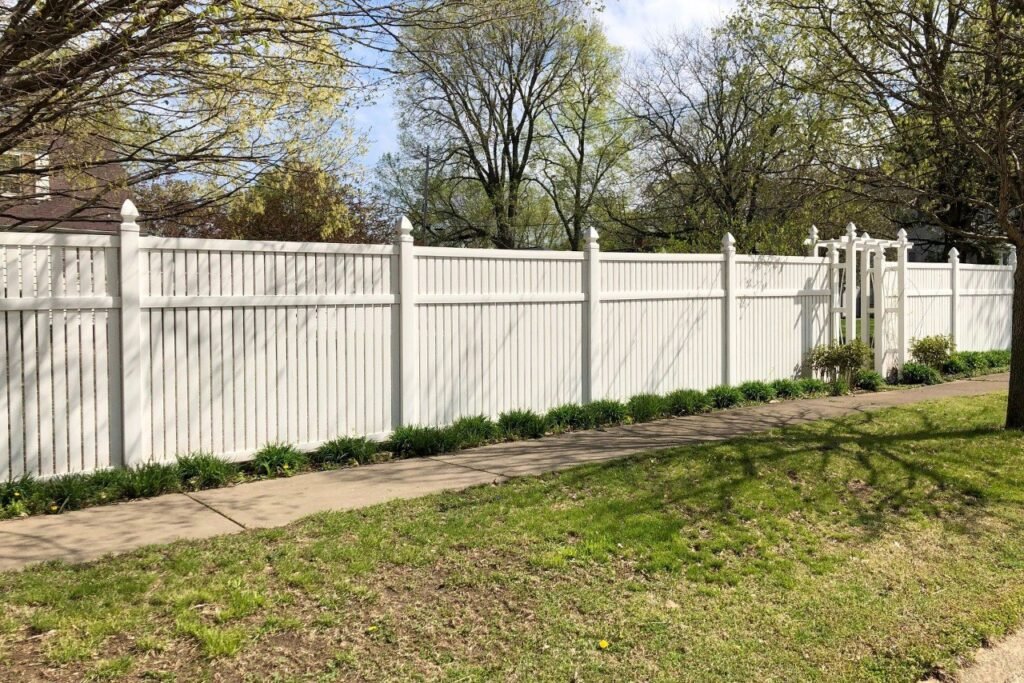
FAQs: About How Many Gates Should A Fence Have NZ
1. How many gates does a typical residential fence need in New Zealand?
On average, a residential property should have at least two gates: one main gate for everyday access and another, usually smaller, for service or emergency use.
2. Are there specific local regulations in New Zealand that dictate the number of gates a fence should have?
Yes, local council regulations may dictate certain aspects of fencing and gate installation, including the number of gates, especially for issues related to safety and access. It’s important to consult local regulations specific to your area.
3. How do property size and layout influence the number of gates in a fence?
Larger properties or those with complex layouts might require additional gates for convenient access to different areas. The number of gates often correlates with the need to access various parts of the property efficiently.
4. What types of gates are most common for residential properties in New Zealand?
Most residential properties use swing gates for driveways and smaller pedestrian gates for foot traffic. Automated gates are also popular for added convenience and security.
5. What should I consider when choosing the material for my fence gates?
Consider durability, maintenance, aesthetic preference, and budget. Common materials include wood, which offers a classic look, and aluminum or steel, known for their durability and low maintenance.
6. How does the purpose of the fence affect the number of gates?
If security is a primary concern, you might opt for fewer gates to limit access points. Conversely, if convenience or aesthetics are more important, more gates might be appropriate to enhance accessibility and design.
7. What are the benefits of having more than one gate in a residential fence?
Multiple gates improve accessibility, enhance safety by providing emergency exits, and increase the property’s curb appeal by offering additional design elements.
8. Can I install as many gates as I want, or are there limitations?
While you might have preferences, local building codes, and council regulations can limit the number and type of gates you can install, often for safety and aesthetic reasons.
9. How often should I maintain my fence gates, and what does maintenance involve?
Maintenance frequency depends on the material but generally includes checking and tightening hardware, lubricating moving parts, and treating or painting surfaces to prevent rust and decay.
10. Who should I consult before adding gates to my fence in New Zealand?
Consult a professional fencing contractor and check with your local council to ensure all installations comply with local regulations and codes. A professional can also provide tailored advice based on your specific property needs and preferences.
Conclusion
When planning a fence for your property, it’s crucial to consider the appropriate number of gates, as this decision significantly affects accessibility and functionality. Understanding factors such as property size, intended use, and daily traffic patterns is essential. We recommend consulting with fencing professionals who can provide insights tailored to your property’s specific conditions, ensuring your fence design not only meets your needs but also complies with local regulations. Careful planning and expert advice are key to creating a fence that effectively serves its purpose while adhering to all necessary standards. This approach will help ensure that your fencing project enhances the value and functionality of your property for years to come.
About the Author:
Mike Veail is a recognized digital marketing expert with over 6 years of experience in helping tradespeople and small businesses thrive online. A former quantity surveyor, Mike combines deep industry knowledge with hands-on expertise in SEO and Google Ads. His marketing strategies are tailored to the specific needs of the trades sector, helping businesses increase visibility and generate more leads through proven, ethical methods.
Mike has successfully partnered with numerous companies, establishing a track record of delivering measurable results. His work has been featured across various platforms that showcase his expertise in lead generation and online marketing for the trades sector.
Learn more about Mike's experience and services at https://theleadguy.online or follow him on social media:
